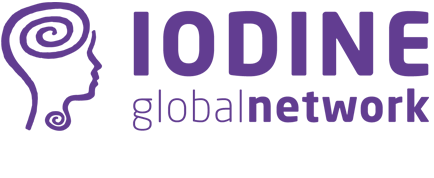Iodine Global Network (IGN)
Sprunglinks/Accesskeys
Zur Startseite (Accesskey 0) Direkt zur Hauptnavigation (Accesskey 1) Direkt zum Inhalt (Accesskey 2) Kontakt (Accesskey 3) Sitemap (Accesskey 4) Suche (Accesskey 5)
DONATE

Lebanon: the risks of not iodizing salt
Translated from original article by Roula Mouawad
According to a study conducted by Dr. Omar Obeid, Professor of nutrition at the American University of Beirut (AUB) and representative of the Iodine Global Network in Lebanon, the needs for iodine vary according to area of residence (enclosed areas and mountains versus areas with sea exposure), consumption of foods rich in iodine, and intake of refined iodized salt.
The study aimed to evaluate iodine status among Lebanese children aged between 6 and 11, using urinary iodine excretion. The results showed that 25 percent of children had urinary iodine levels below 50 micrograms per liter. The lowest concentrations were seen in the Bekaa and Akkar, perhaps because of the use of coarse salt, or the lack of marine products, or because iodine in these regions (far from the sea) is less available in the soil, or iodine is poorly available in salt, or people there have specific cooking habits.
Obeid said: “We provided the Ministry of Health with the findings and we asked them to measure iodine levels in salt available in the market. Iodine content in salt samples was too low, below the recommendations. In fact, in the salt refineries, iodine is dissolved in water and sprayed on salt; however, to abide by the Lebanese salt law requirement of moisture levels (less than 0.5 %), salt samples are run into drying processes that may reduce the amount of iodine in the final product. On the other hand, there is a possibility that a group of people do not consume refined salt, but rely on coarse salt, which is not covered by the law. It is important to note that food sources of iodine include fish and sea products; the iodine content of other foods depends on iodine availability in soil.
According to a study conducted by Dr. Omar Obeid, Professor of nutrition at the American University of Beirut (AUB) and representative of the Iodine Global Network in Lebanon, the needs for iodine vary according to area of residence (enclosed areas and mountains versus areas with sea exposure), consumption of foods rich in iodine, and intake of refined iodized salt.
The study aimed to evaluate iodine status among Lebanese children aged between 6 and 11, using urinary iodine excretion. The results showed that 25 percent of children had urinary iodine levels below 50 micrograms per liter. The lowest concentrations were seen in the Bekaa and Akkar, perhaps because of the use of coarse salt, or the lack of marine products, or because iodine in these regions (far from the sea) is less available in the soil, or iodine is poorly available in salt, or people there have specific cooking habits.
Obeid said: “We provided the Ministry of Health with the findings and we asked them to measure iodine levels in salt available in the market. Iodine content in salt samples was too low, below the recommendations. In fact, in the salt refineries, iodine is dissolved in water and sprayed on salt; however, to abide by the Lebanese salt law requirement of moisture levels (less than 0.5 %), salt samples are run into drying processes that may reduce the amount of iodine in the final product. On the other hand, there is a possibility that a group of people do not consume refined salt, but rely on coarse salt, which is not covered by the law. It is important to note that food sources of iodine include fish and sea products; the iodine content of other foods depends on iodine availability in soil.
